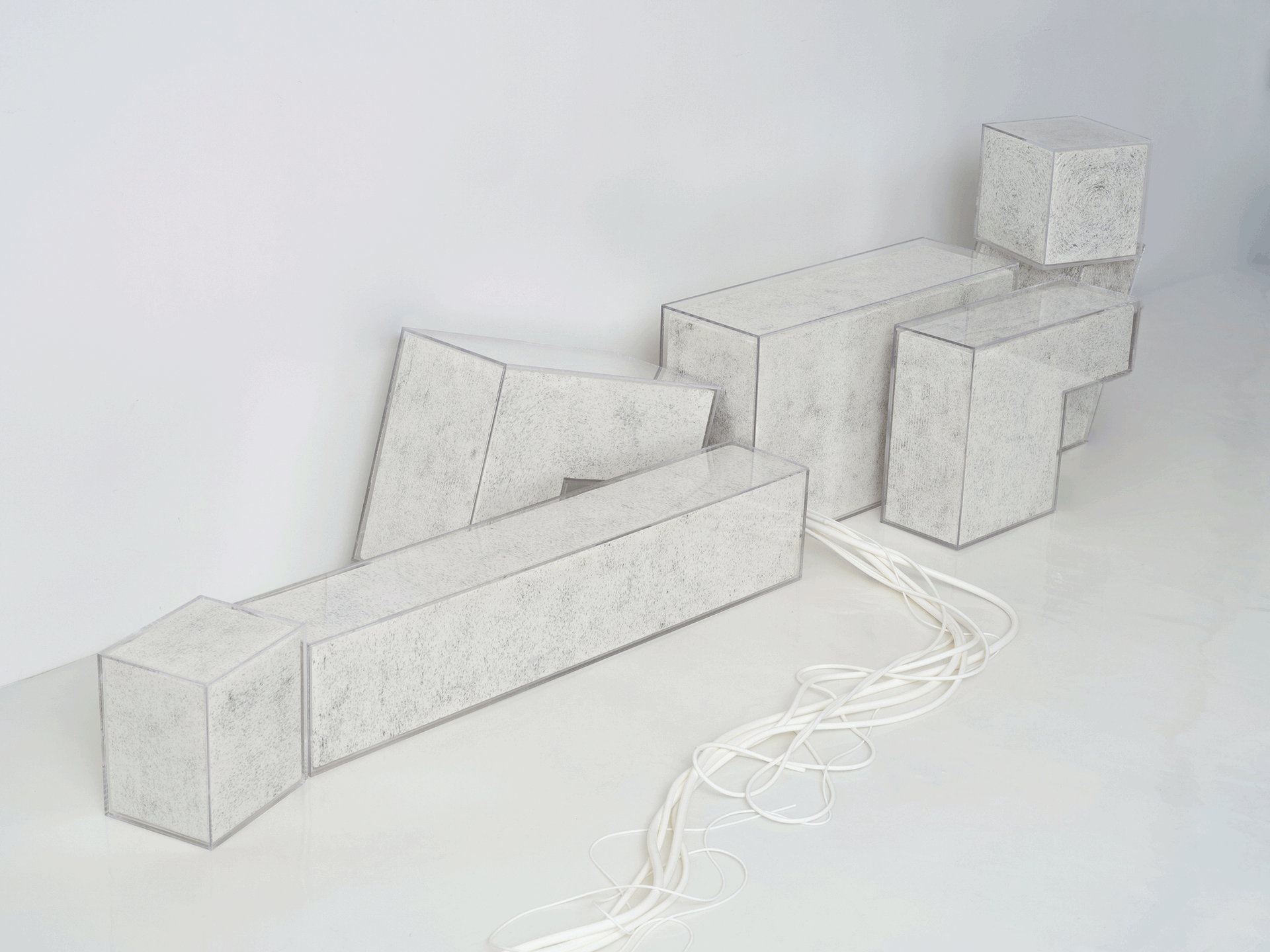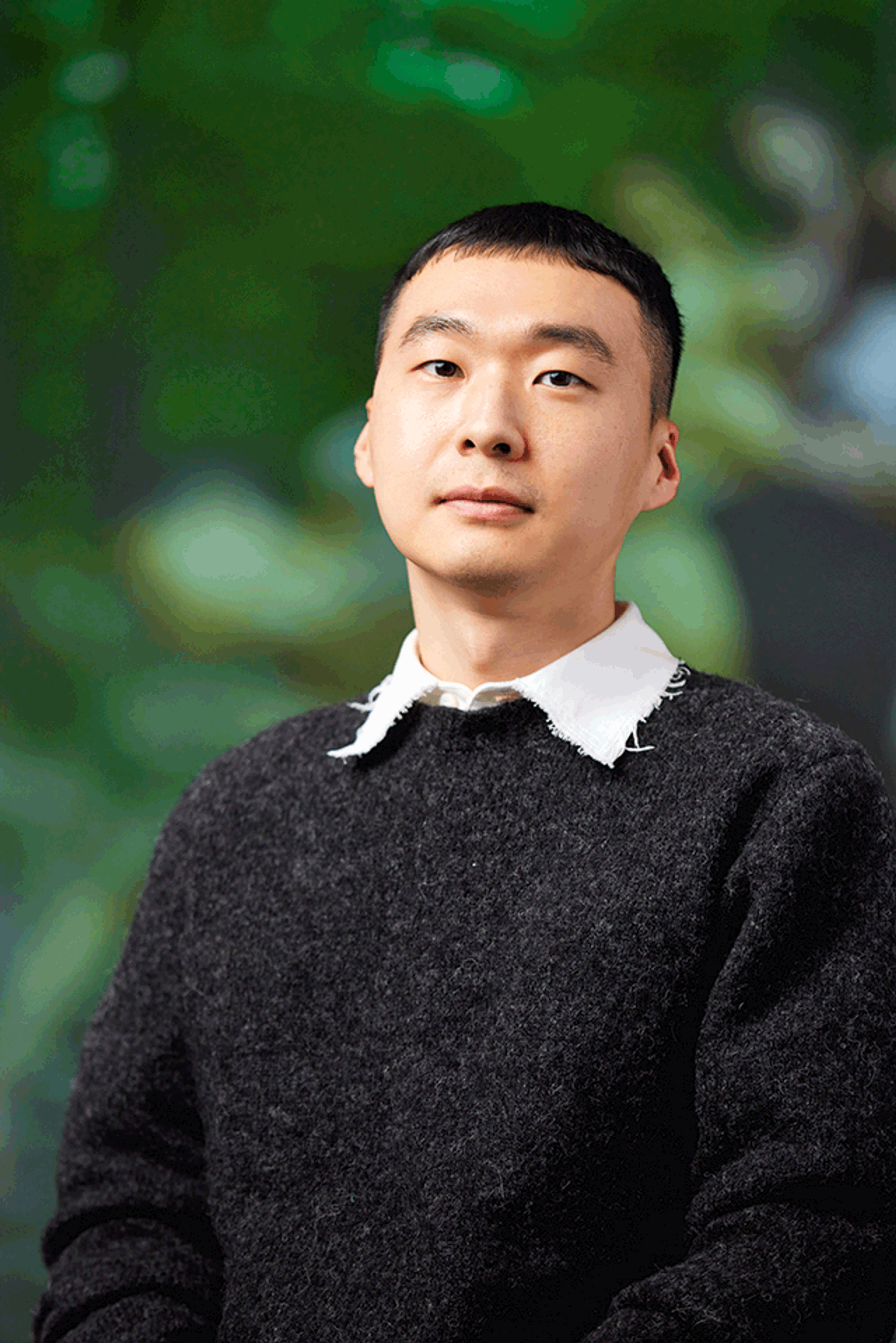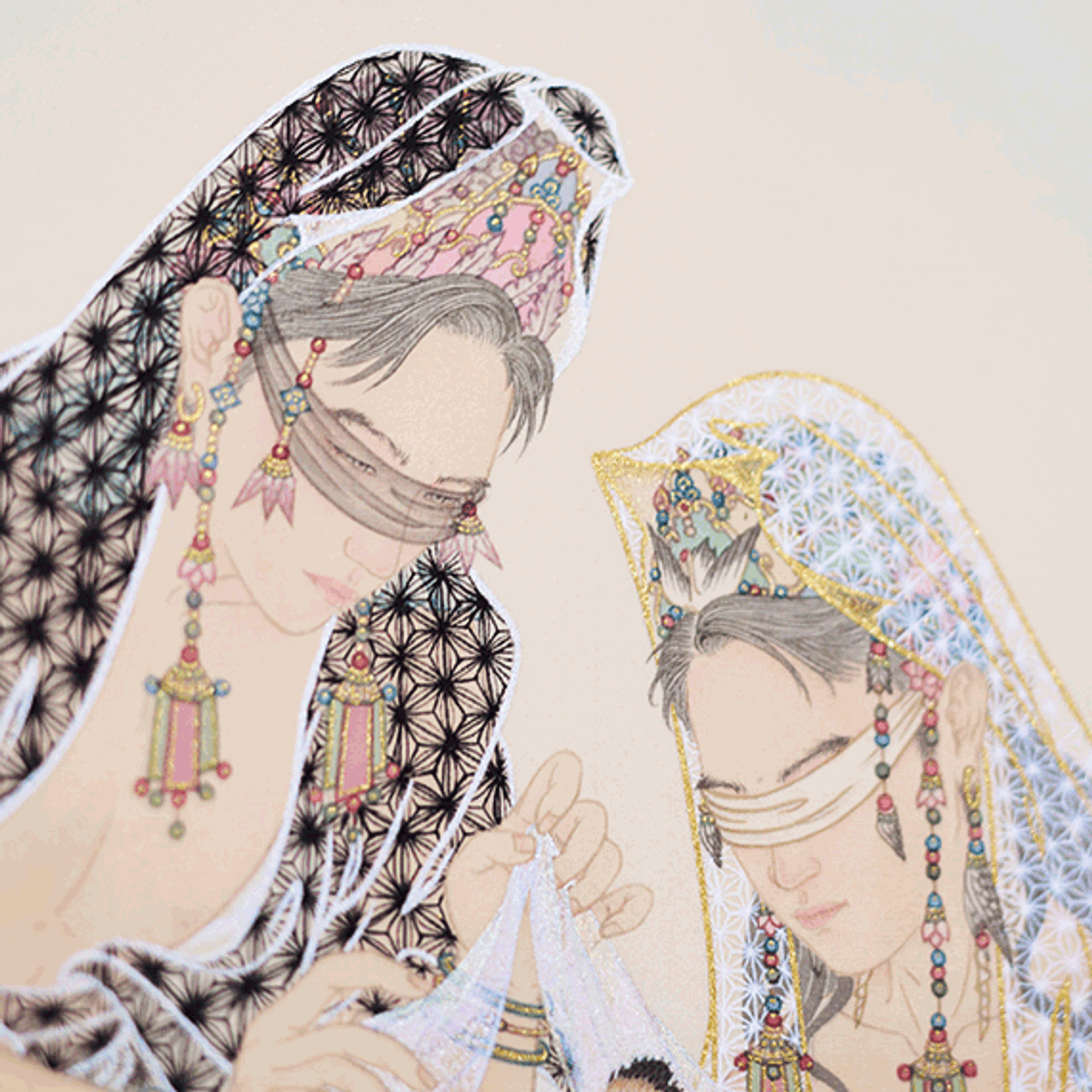The South Korean Supreme Court ruling this July upholding state health insurance benefits for same-sex partnerships has underlined the nation’s growing acceptance towards LGBTQ+ rights and visibility. And alongside those shifting attitudes, queer art is starting to blossom in Korea.
“It’s still not enough, but things are relatively better, and I believe they will get better [still],” says the artist siren eun young jung. Her Yeoseong Gukgeuk Project (2008-present) documents a vanishing all-women traditional opera form, an early form of Korean drag. It netted jung the 2018 Korea Artist Prize and a spot in Korea’s Venice Biennale pavilion a year later, making her Korea’s most celebrated LGBTQ+ artist. “The number of queer artists has increased, as has art on queerness and queer criticism as well,” she says. “Of course, I don’t think the quantitative increase will make everything better, but it is very encouraging and I am positive that it will expand into a meaningful discourse.”
One of the first artists in South Korea to make work around queer issues is Inhwan Oh, who has been exploring Korean and gay identities since 1996. His works include using incense powder to write the names of gay clubs. The activist-artist Heezy Yang has been staging performances about gay rights since the early 2010s, often as his drag persona, Hurricane Kimchi. Minki Hong’s films exploring inequities in society include one about his own inability to marry his foreign boyfriend. And the Los Angeles-based Kang Seung Lee’s contemplations of queer and migratory histories, including the Aids crisis, won the 2023 Korea Artist Prize and was included in the main exhibition of this year’s Venice Biennale, Foreigners Everywhere.

Haneyl Choi’s Life as a struggling uncle (2024)
Courtesy the artist. Photo: Kim Sangtae
Among the young rising stars making explicitly LGBTQ+ work are Grim Park, who uses poetic metaphors and traditional Korean painting to express queer experiences. Another emerging talent, Haneyl Choi, makes bold sculptures referencing ideal gay physiques and he will show in this year’s Gwangju Biennale.
“Queer art in South Korea seems to be going through a period of quiet but significant growth,” says the Seoul-based journalist Raphael Rashid. “The scene has been shifting over the years from traditional visual arts and photography to drag events, theatre and independent filmmaking. New subcultures like ballroom are also gaining popularity.” Events like the annual Pride, which took place in Seoul this July, also provide platforms for queer artists to show and sell.
“Most people figure out a double life: they go to work then [gay clubbing area] Itaewon, no one cares”
Young-jun Tak, artist
What Korea calls the MZ Generation, i.e. millennials and Generation Z combined, are increasingly dominating both art creation and collecting, and are overwhelmingly in support of, or neutral on, LGBTQ+ rights. While the influential pop music industry remains chaste and officially straight, its globally marketed boybands, such as BTS, do challenge the traditional Korean attitudes towards masculinity and male sexuality.
The Berlin-based Korean artist Young-jun Tak observes how the rise of Netflix and YouTube in Korea has also permitted more queer programming than traditional broadcast channels. During a 2023 solo show with Atelier Hermès in Seoul, Tak says he encountered no challenges to gay content, including male nudity. He also met an encouraging community of supportive gay collectors.
Nonetheless, resistance towards queerness in Korean society is still present, especially among older and more conservative demographics, as well as political and religious figures. “I hate to say it, but when all the conservative old generation dies out, voting will change,” Tak says. “Daily life versus the politicians is completely different,” he adds. “Most people figure out a double life: they go to work then go to [the gay clubbing area] Itaewon, no one cares. Still, amazing human rights and queer organisations are working so hard for more.”
Tak’s works include sculptures of Christian iconography covered in Korean text, which are taken from anti-gay propaganda leaflets. He first encountered the fliers when they were being handed out by religious protesters at the 2014 Queer Culture Festival. “It was my first Pride event and I found it very shocking and emotional: I could not understand why they would put so much energy into hating people.”

Young-jun Tak
Photo: Sangtae Kim, Fondation d’entreprise Hermès
There is still religious and political resistance, however. For the past two years the Seoul Queer Culture Festival, which has run since 2000, has been prevented from using its usual venue, Seoul Plaza, because of campaigning by a Christian group, supported by the city’s mayor, Oh Se-hoon. Last year, Daegu’s mayor led 500 civil servants to attack Daegu Queer Culture Festival participants. However, fine arts are largely too niche to draw religious ire, Rashid says. “Artistic expressions often fly under the radar of possible opposition from conservative or religious groups, allowing them to flourish without significant backlash,” not least because their instigators and audiences are younger. Challenges do remain: in 2020 an exhibition he co-curated on LGBTQ+ discrimination, Pride Over Prejudice, “was rejected by multiple spaces before finding a willing host”, Factory2 in Seoul.
“Just a decade ago, there was censorship. LGBTQ+ references and symbols were often not accepted in public museums or art schools,” says jung. “But now, they sometimes use LGBTQ+ [issues] as a token to show their tolerance. It is totally okay [as long as] we don’t talk about practising queerness very much.” She describes how she is now able to work at a university and is commonly invited onto juries for cultural funding.
Jung hopes her rise to prominence will help to shift the discourse in the Korean art scene. “I deliberately use the word ‘queer’ often to increase visibility, to elevate its status. I am grateful for the struggles of those who came before me, such as Inhwan Oh, Joo Kyung Yoon and Doojin Kim.”

A detail of Two Mischief (2024) from Grim Park’s solo exhibition ’44’ at Gallery Theo in Seoul. He uses poetic metaphors and traditional Korean painting to express queer experiences
Courtesy @gallerytheo
But if society has moved slowly, South Korean law has moved even slower: until this summer, it lacked any anti-discrimination laws. “Korea is a very conservative country, but when it sees a change or need, it moves things forward at an amazingly fast pace,” says jung. She describes the Supreme Court ruling as a “barometer of the radicalisation of Korean society” but caveats that it “could also be a realisation of the desire to become a developed-Westernised country that chases global standards and the demands of the times under the guise of neoliberalism and assimilationism. We will have to wait and witness where our history is heading.”


